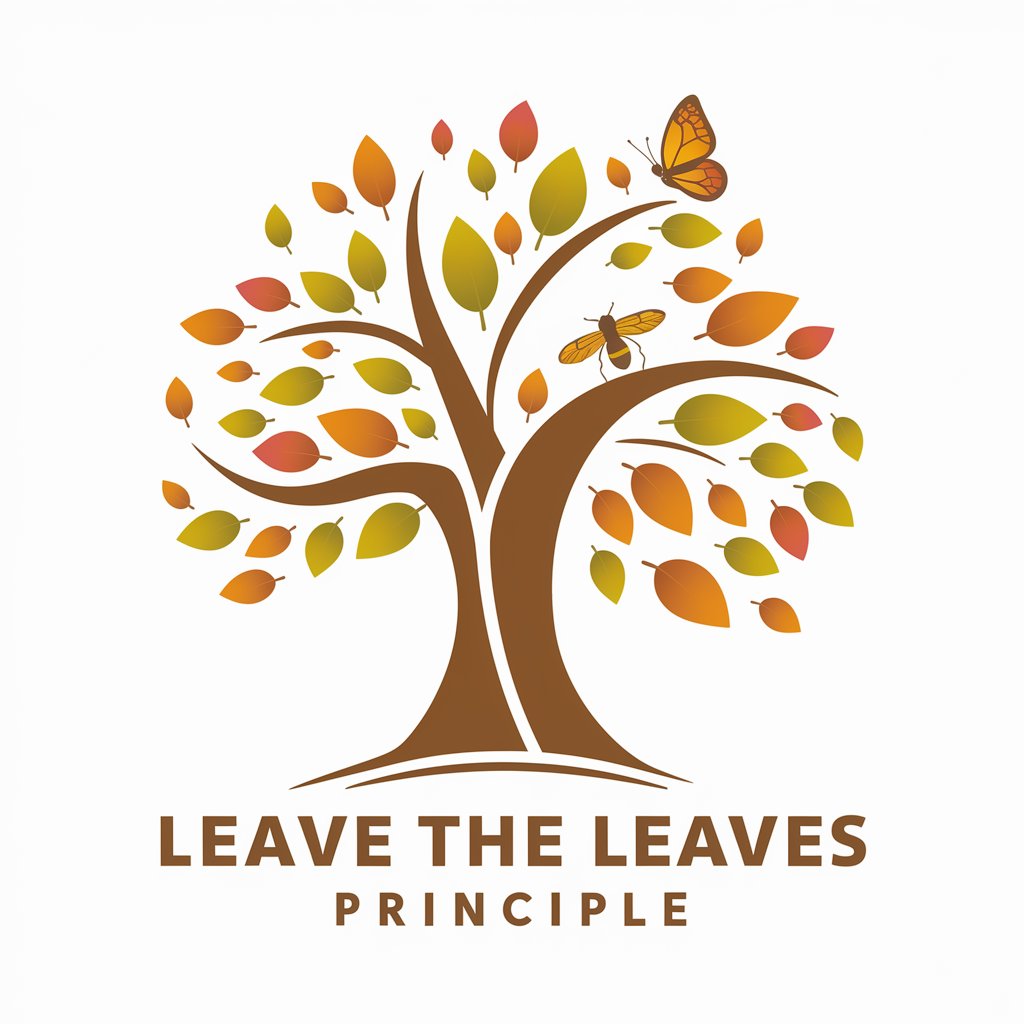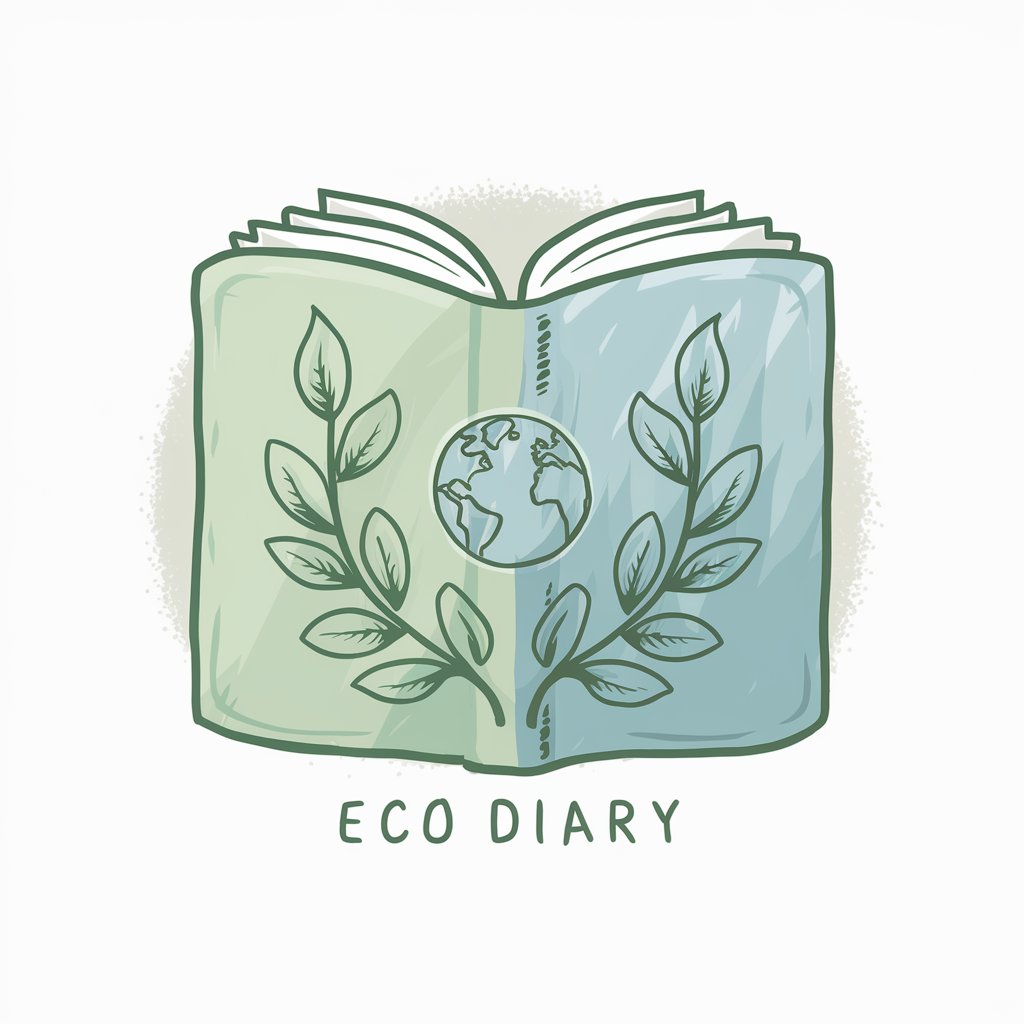
LeaveTheLeaves - Leaf Management Tool

Welcome! Let's explore the benefits of leaving the leaves.
Support Nature with AI
How can leaving leaves on the ground benefit local wildlife?
What are the ecological benefits of not raking fall leaves?
Can you explain the role of leaf litter in supporting pollinators?
What are some practical ways to manage leaves in a garden without removing them?
Get Embed Code
Introduction to LeaveTheLeaves
LeaveTheLeaves is a principle focused on promoting environmental health and biodiversity through the conservation of fallen leaves during autumn and early winter. This approach advocates for leaving the leaves undisturbed on the ground rather than collecting them. This method supports various ecological benefits, such as providing habitat for wildlife, enhancing soil health, and conserving water. An example scenario demonstrating the utility of LeaveTheLeaves is a suburban backyard where leaving leaf litter can help support local butterfly populations that overwinter in the leaf debris, thus promoting a balanced ecosystem right at home. Powered by ChatGPT-4o。

Main Functions of LeaveTheLeaves
Habitat Provision
Example
Leaf litter serves as a crucial overwintering habitat for numerous species, including insects like butterflies and beetles, which use the leaves for shelter against cold temperatures.
Scenario
In a residential garden, leaving leaves on the ground can provide a winter refuge for pollinators and other beneficial insects, enhancing biodiversity.
Soil Enrichment
Example
Leaves decompose to enrich the soil with organic matter, improving soil structure and fertility.
Scenario
A community park adopts the LeaveTheLeaves approach, resulting in improved soil health over several seasons, which supports more robust plant growth and a healthier local environment.
Water Conservation
Example
Leaf mulch helps retain soil moisture by reducing evaporation, thus requiring less watering in landscaped areas.
Scenario
In a drought-prone area, homeowners leave fallen leaves on their lawns to conserve water, effectively reducing their irrigation needs while maintaining a healthy lawn.
Ideal Users of LeaveTheLeaves
Home Gardeners
Home gardeners can benefit from using LeaveTheLeaves by reducing yard maintenance costs and efforts, enhancing the aesthetic and ecological value of their gardens.
Urban Planners
Urban planners can integrate LeaveTheLeaves principles into city landscaping guidelines to support urban wildlife habitats and improve the environmental sustainability of public spaces.
Environmental Educators
Environmental educators can use the LeaveTheLeaves campaign as a teaching tool to promote ecological awareness and responsible environmental practices among students and the community.

Guidelines for Using LeaveTheLeaves
Sign Up for a Trial
Visit yeschat.ai to begin your free trial; no login or ChatGPT Plus required.
Identify Your Needs
Evaluate your garden or yard to determine how best to apply the LeaveTheLeaves principle, focusing on areas where leaf litter can be most beneficial.
Gather Materials
Prepare necessary tools such as rakes or leaf blowers for managing larger areas, or decide on areas where leaves will be left undisturbed.
Implementation
Strategically leave leaves on the ground, especially under trees, in flower beds, and around shrubs to enhance biodiversity and soil health.
Maintenance and Observation
Monitor the effects on your local ecosystem, particularly insect and plant health, and adjust your leaf management practices as needed.
Try other advanced and practical GPTs
Brazil Flora Identifier
Discover Brazilian flora with AI

Edgar
Power Your Decisions with AI

Digital Project Guide
Empowering Digital Projects with AI

Eco Diary
Harness AI to Fight Climate Change

Marketing Mentor
AI-powered Marketing Strategist

GPT Cortona
Empowering Creativity with AI

Expert Coder
Your AI-powered coding partner

Scripture and Mythology Studies
Deciphering the Past with AI

Fictional Language Translator
Craft Languages with AI

Fictional Characters Speak
Meet Fiction, Powered by AI

Fictional Conspiracy Crafter
Unleash AI-Powered Conspiracy Crafting

Fractional CFO AI Assistant
Empowering finance with AI insights

Frequently Asked Questions about LeaveTheLeaves
What is the main benefit of leaving leaves on the ground?
Leaving leaves on the ground helps enhance soil health and biodiversity. It provides essential habitat for many insects and enriches the soil as the leaves decompose.
Can leaving leaves on the ground harm my lawn?
A thin layer of leaves can actually be beneficial by providing nutrients and suppressing weeds. Thick layers should be managed to prevent damage to grass.
How does LeaveTheLeaves affect local wildlife?
It significantly benefits wildlife by providing habitats for overwintering insects and other small creatures, which are crucial for ecological balance.
Is it necessary to remove any leaves at all?
While some removal may be necessary for aesthetics or to prevent excessive buildup, generally reducing the amount of leaves removed is better for the environment.
Can I use the leaves for compost?
Yes, leaves make excellent 'brown' material for composting, providing carbon that balances the nitrogen-rich 'greens' like food scraps and lawn clippings.